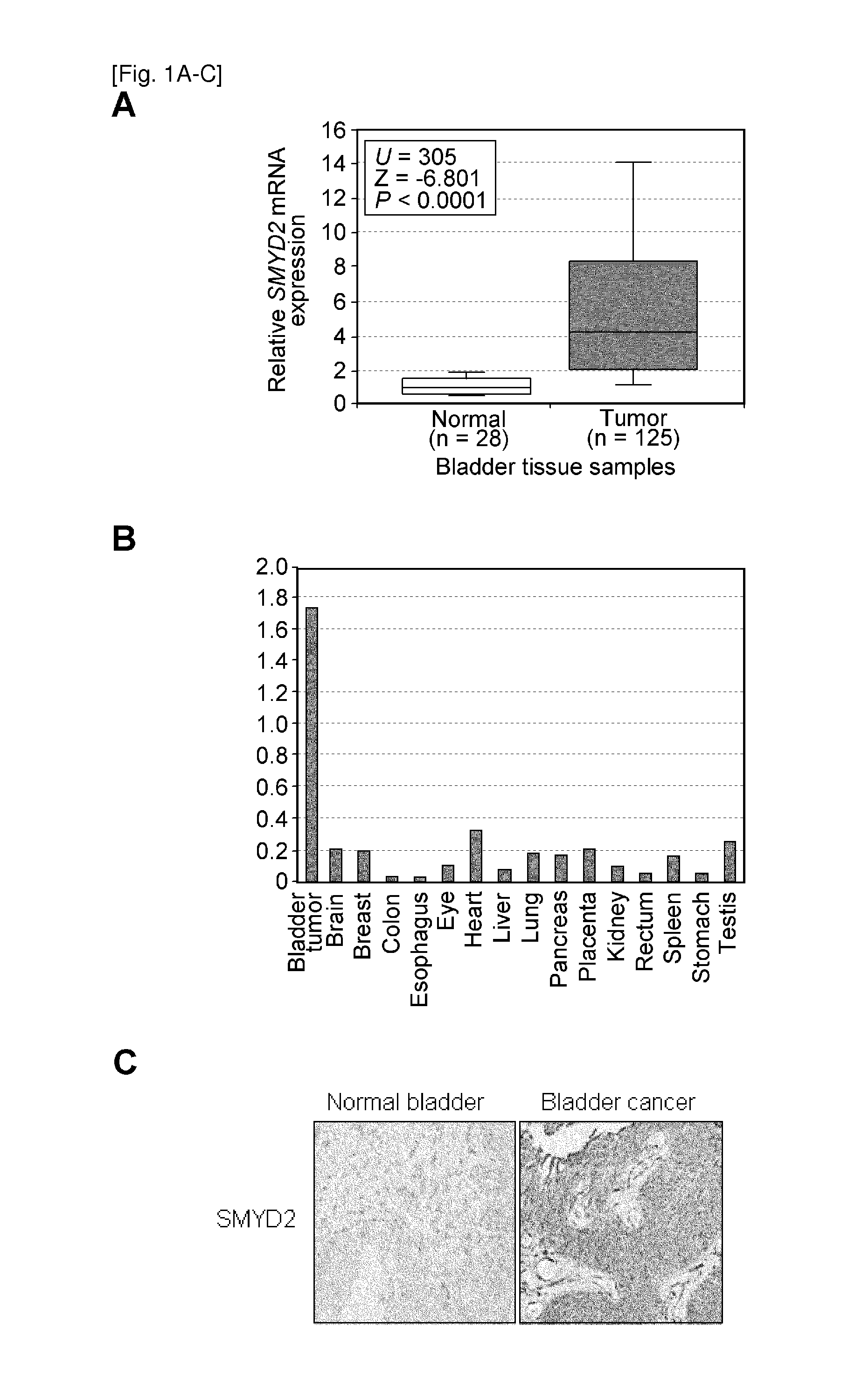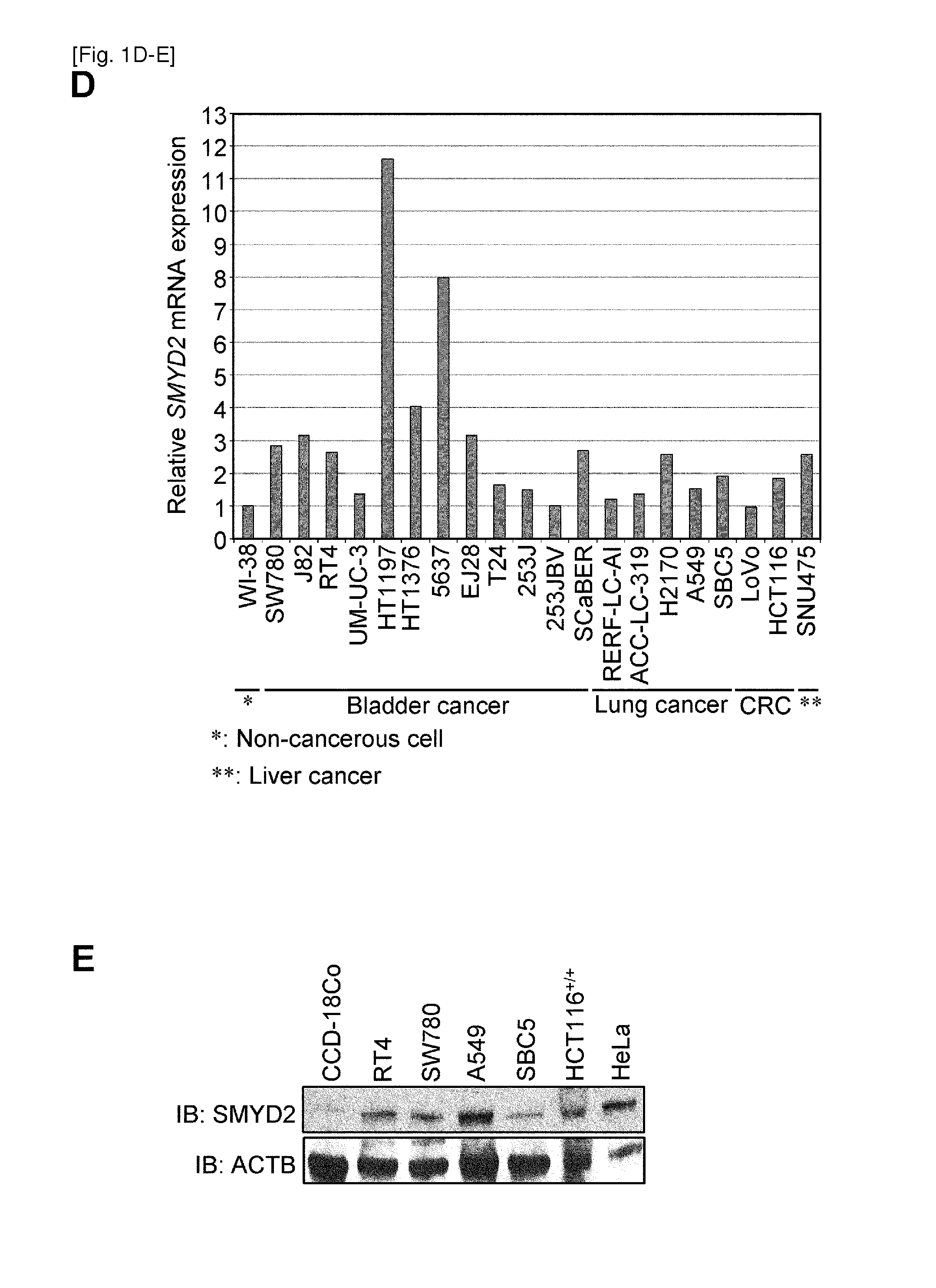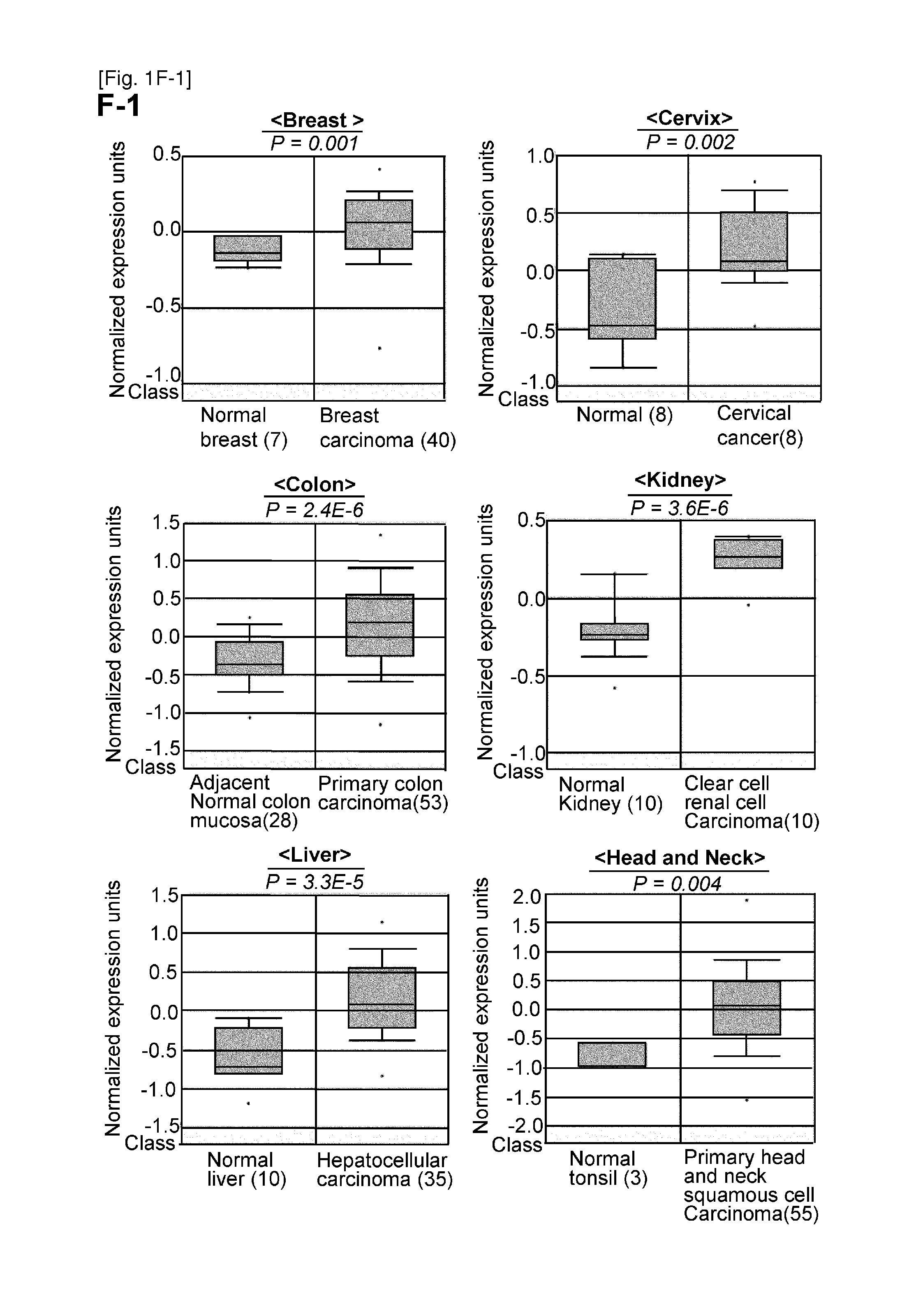Smyd2 as a target gene for cancer therapy and diagnosis
a cancer and target gene technology, applied in the field of biological science, can solve the problems of unclear significance of other posttranslational modifications, including lysine methylation for regulating rb functions, and yet to be able to explain the physiological significance of methylation, so as to accelerate the proliferation of cancer cells, promote the formation of dimerization and chaperonin complexes, and enhance serine 807 and/or serine 811. phosphorylation
- Summary
- Abstract
- Description
- Claims
- Application Information
AI Technical Summary
Benefits of technology
Problems solved by technology
Method used
Image
Examples
example 1
Materials and Methods
[0454]Bladder tissue samples and RNA preparation.
[0455]Bladder tissue samples and RNA preparation were described previously (Wallard, M. J. et al. Br J Cancer 94, 569-577 (2006)). Briefly, 125 surgical specimens of primary urothelial carcinoma were collected, either at cystectomy or transurethral resection of bladder tumor (TURBT), and snap frozen in liquid nitrogen. 28 specimens of normal bladder urothelial tissue were collected from areas of macroscopically normal bladder urothelium in patients with no evidence of malignancy. Vimentin is primarily expressed in mesenchymally derived cells, and was used as a stromal marker. Uroplakin is a marker of urothelial differentiation and is preserved in up to 90% of epithelially derived tumors (Olsburgh, J. et al. The Journal of pathology 199, 41-49 (2003)). Use of tissues for this study was approved by Cambridgeshire Local Research Ethics Committee (Ref 03 / 018). RNA samples of normal tissues (brain, breast, colon, esoph...
example 2
SMYD2 is Over-Expressed in Human Cancer and Regulates the Growth of Cancer Cells
[0488]The present inventors first examined expression levels of a number of histone methyltransferases in a small subset of clinical bladder samples and found significant differences in expression levels between normal and cancer cells for the SMYD2 gene. Consequently, 125 bladder cancer samples and 28 normal control samples (British) were analyzed, and significant elevation of SMYD2 expression was found in tumor cells compared with in normal cells (P<0.0001, Mann-Whitney U-test) (FIG. 1A and Table 5: patient characteristics). Expression levels of SMYD2 between bladder tumor and various types of normal tissues were also compared, and it was found that expression levels of SMYD2 in bladder tumor tissues are significantly higher than those in normal organ tissues including heart, lung, liver and kidney (FIG. 1B). Additionally, immunohistochemistry showed over-expression of SMYD2 in bladder cancer sections ...
example 3
SMYD2 Forms a Complex with HSP90AB1
[0491]In order to clarify how SMYD2 promotes cancer cell growth, the present inventors attempted to identify interacting partners of SMYD2. 293T cells were transfected with a FLAG-mock or a FLAG-SMYD2 vector, and immunoprecipitation (IP) and mass spectrometry (MS) analysis was conducted. Consequently, HSP90AB1 was identified as an interacting partner of SMYD2 (FIG. 3A). Since HSP90 protein has been considered to play critical roles in human cancer through chaperoning many oncoproteins and facilitating their functions (Trepel, J., Mollapour, M., Giaccone, G. & Neckers, L. Nat Rev Cancer 10, 537-549 (2010)), the functional relationship between SMYD2 and HSP90AB1 was examined. The interaction between SMYD2 and HSP90AB1 was confirmed by co-immunoprecipitation analysis (FIGS. 3B and 3C). To determine the binding region of SMYD2 to HSP90AB1, plasmid clones designed to express different portions of SMYD2 were constructed and co-immunoprecipitation analysi...
PUM
| Property | Measurement | Unit |
|---|---|---|
| pH | aaaaa | aaaaa |
| flow rate | aaaaa | aaaaa |
| pH | aaaaa | aaaaa |
Abstract
Description
Claims
Application Information
 Login to View More
Login to View More - R&D
- Intellectual Property
- Life Sciences
- Materials
- Tech Scout
- Unparalleled Data Quality
- Higher Quality Content
- 60% Fewer Hallucinations
Browse by: Latest US Patents, China's latest patents, Technical Efficacy Thesaurus, Application Domain, Technology Topic, Popular Technical Reports.
© 2025 PatSnap. All rights reserved.Legal|Privacy policy|Modern Slavery Act Transparency Statement|Sitemap|About US| Contact US: help@patsnap.com



